2011 Nominees
The texts below were all published, produced, or performed during 2010.
The description that follows each nomination was written by the member of the nominating committee
who submitted the essay for consideration.
“Plastic Bag”
Ramin Bahrani (produced by Futerstates, available online here.)
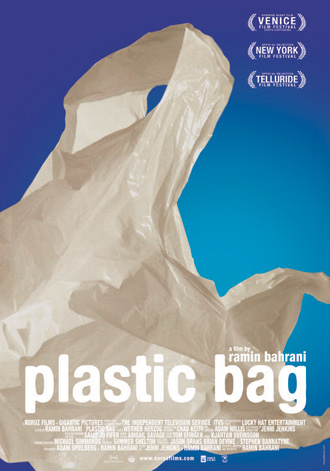
“At once a parable of mortality and a clever and heartbreaking critique of human wastefulness, this is an extremely effective polemic, and an essay in many traditions. What comes to mind when thinking about its style is ‘Street Haunting’ by Virginia Woolf. I am left moved and almost ready to give up plastic bags altogether!”
Nominated by Honor Moore, author of the award-winning memoir The Bishop’s Daughter.
“Talking Trash”
Robin Black (published in Conde Nast Traveler, June 2010)

“Sometimes narration is itself a way of dealing with detritus and trash, a sort of cleaning—a way of interpreting and peeling through our collected histories.”
Nominated by Michael Martone, author of The Flatness and Other Landscapes.
Patience: Taking Time in the Age of Acceleration
Akiko Busch (published by Sterling Publishing)

“Akiko Busch’s book-length essay, Patience, requires no patience at all to read; it is as engaging an essay as was ever written. It’s a classical meditation on the subject, a subject which seems to be of the essence today, in our endless acceleration and obsession with speed. I loved its elegance, its wit, its intelligence, and most of all I loved its ability to engage my mind in hallways of its own, that which happens only in a great essay—the reader himself takes off on a walk, and the essay’s map thus extends itself beyond the page; I found myself considering my own past failures with patience, and came finally to see that there is a very real way in which each life is no more—or any less—than a long coming to terms with patience, in both practical and spiritual terms. For the self-examined life, patience is not an isolated virtue, it is the central necessity.”
Nominated by Mary Ruefle, winner of the 2009 Essay Prize for The Most of It.
“Short Essay on Being”
Jenny Boully (Published in TriQuarterly, Summer 2010)
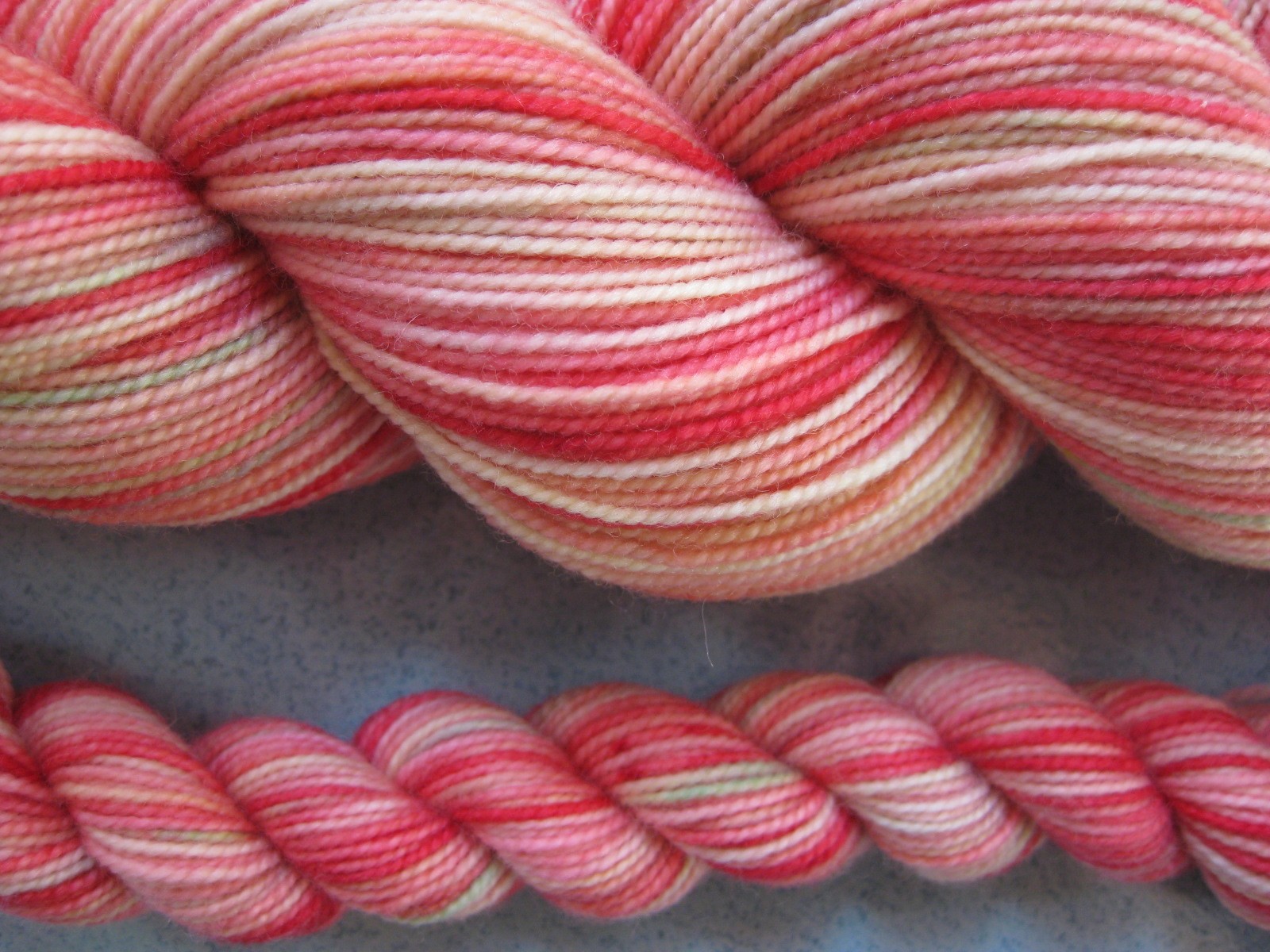
“When I first read Jenny Boully’s essay ‘A Short Essay on Being’ in TriQuarterly, I was put off. It was so much more traditional than her usual work. Was she capitulating to this hard-times. Easy-essay publishing trend? But on closer inspection, I realized, she was doing even more subtly what she does in her more obviously experimental essays. It’s during her transitions that she expects the reader to hang out in uncertainty. The paragraphs themselves are straightforward enough but in between them, something transformative happens. Boully makes no fewer than 29 transitions in this short essay. Each paragraph leaps from one idea to the next: ‘My aunt would die in a few days. And my sister and I lived much of our lives after that believing we were Thai nationals;’ ‘I would like to know why, more often than not, the pad Thai that I order in restaurants, even if it’s made by someone who is Thai, is orange and served in a syrup so thick that I’m sure there’s high-fructose corn syrup in it;’ ‘He asked me if I was mixed. Yes, I said;’ ‘Once, I sent back an order of pad Thai three times. It tasted of pineapple and was covered in syrup.’ You’ve got death. You’ve got heritage. You’ve got race. You’ve got pineapples. And Boully holds it together with syrup. As Judith Kitchen writes, ‘The trajectory of memoir is a slow accumulation; the successive scenes take on weight and significance as we begin to gain perspective on the whole.’ Really difficult transitions work through emotion as much as logic. Although repetition and sonic manipulation can help make the meaning, it’s in the tenor of the transition. I nominate Boully’s essay because of the risks Boully takes, but also because of the meaning she makes with those risks.”
Nominated by Nicole Walker, author of The Lazy Egg.
“Eight Questions You Would Ask Me If I Told You My Name”
Ay?e Papatya Bucak (from Creative Nonfiction, #39, Fall 2010)

“I admire this piece because it does what I believe the best creative nonfiction should do: It tells a story and has a thesis—one that all readers can relate to in a variety of ways. The format engages the reader in a cinematic fashion, compelling attention and ringing with universal clarity. It demonstrates the range of creative nonfiction and illustrates the notion that writers can be imaginative with fact without imagining or inventing details.”
Nominated by Lee Gutkind, editor of Creative Nonfiction.
“Silver or Lead”
William Finnegan (published in The New Yorker, May 31, 2010)

“I had various candidates and finalists on my short list this year (I loved some of Tony Judt’s valedictory essays in The New York Review of Books), but the essay I’ve been waiting to nominate was called “Silver or Lead,” and was by William Finnegan, from The New Yorker. A very gritty and controlled piece of reporting, from the middle of the murderous Mexican drug war, and somehow the kind of real-world essay I’m always dying to share with anyone around.”
Nominated by Pico Iyer, award-winning author of a dozen books, including Tropical Classical: Essays from Different Directions.
Tree of Codes
Jonathan Safran Foer (published by Visual Editions)
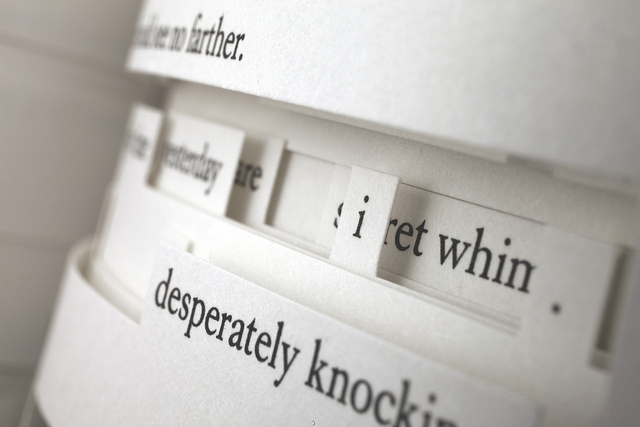
“In standard ‘erasure poetry’, the words of the source-text get whited-out or obscured with a dark color, but the pages in Foer’s new book, Tree of Codes, have actually gone under the knife, rectangular sections physically excised using a die-cut technique that resembles X-acto artistry. The result: chinked, rectangular cut-outs around which remaining text floats, reminding me of the shape of floor plans (albeit for buildings made of nothing); they produce windows and doorways to portions of up to ten successive pages of text at a time. I confront morphemes, words, and phrases that get revealed, repeated, and then covered up. Like a disrupted pantoum built from the half-thoughts, mumbles, and pooling associations of a madman, language waves at me through these X-actoed text-windows, disrupting the surface-texture of the page. The composition not only interrupts normal saccadic rhythms but in effect forces me to read the book back-to-front at the same time I’m reading it front-to-back, perhaps nodding at the process of reading Hebrew, which in relation to English is read backwards. Lifting the pages up one by one, I discover a lyrical semi-narrative delivered by a single narrator, characters (a father and mother), a single plot-point (the father’s death), and a shift in setting (the movement from an Eden-like garden to an urban frontier). Futzing with Bruno Schulz’s book Street of Crocodiles, Foer gets extremely intimate with the Polish writer; Foer is writing a book with, through, and for Schulz by un-writing the original. This is an age in which there is much debate about the relevance of books to our byte-obsessed culture, but I’ve yet to come across any conglomeration of text, hyperlinks, images, and ads in the sidebar that presents a more chaotic and multi-dimensional reading experience than this book. This is the end of reading; this is the future of reading. This is the end of writing; this is the future of writing.”
Nominated by David Shields, bestselling author of Reality Hunger: A Manifesto.
“Bed Intruder Song”
The Gregory Brothers (produced by The Gregory Brothers, available online here.)
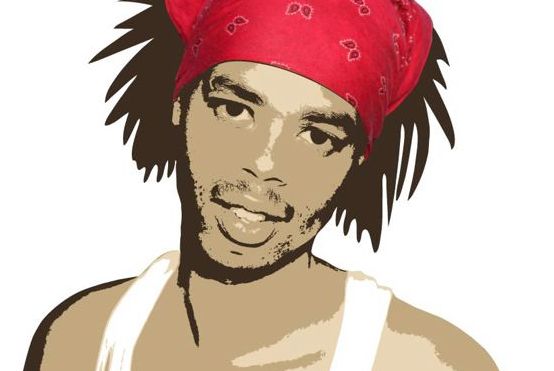
“It started with a local TV news interview in Huntsville, Alabama. After startling an alleged intruder and chasing him out of their home, a young man named Antoine Dodson addressed the television news camera and its audience directly, warning about the presence of a rapist in his Lincoln Park neighborhood. He’s exasperated, confident, and admittedly a bit flamboyant. And that’s what started the controversy. The news station that aired the interview received dozens of angry emails that complained that the interview with Dodson perpetuated stereotypes of African Americans. But the TV station stood by the interview, which eventually wound up on YouTube, and then into the hands of The Gregory Brothers, a foursome that has made a name for itself by remixing authentic newscasts with a feature called ‘Auto Tune’ and reworking them as R&B songs (or as rap, opera, etc). The song they produced featuring Dodson’s interview has been viewed over 57 million times on YouTube; it’s now become an iTunes hit; and presumably it’s launched the career of a genuinely talented music group. Why I admire their ‘Bed Intruder’ song is because it’s funny, certainly, and annoyingly catchy, but most importantly because it’s a wildly ingenious use of YouTube to extend the tradition of the ‘found text’ in the production of art. Whether it’s Duchamp’s ‘Fountain,’ Picasso’s collages, Burroughs’ ‘cut-ups,’ or David Shields’ recent Reality Hunger, the art of the readymade is fundamental to the creative process. In this case, The Gregory Brothers have taken a piece of journalism—existing on one extreme end of the so-called ‘nonfiction’ spectrum—and converted it into an essay that brilliantly satirizes the tendency a supposedly serious journalism to slip into the role of entertainment, of commodity.”
Nominated by John D’Agata.
“Dianna Molzan”
Bruce Hainley (published in Artforum, April 2010)
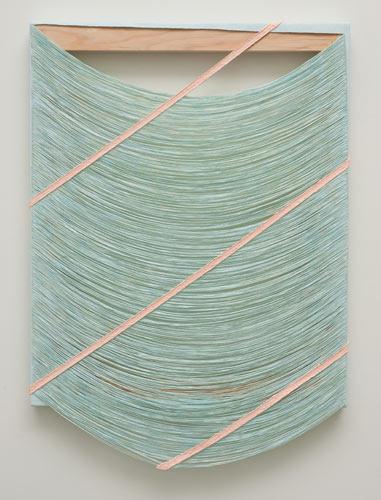
“I loved Bruce Hainley’s essay on the artist Dianna Molzan—it appeared in April 2010 Artforum. The essay is ‘difficult,’ but offers a great model for how to write insouciantly and super-smartly about art—a model for how to write about art while liberating prose from the regime of the ‘about.’”
Nominated by Wayne Koestenbaum, author of over a dozen highly acclaimed books, including the new Humiliation.
“That Roar on the Other Side of Silence”
Kim Dana Kupperman (from I Just Lately Started Buying Wings, Graywolf)

“This essay marries the traumatic content of the narrator’s experience working in a women’s shelter with a virtuoso’s ability to manipulate form. Within one essay, the author shifts from a fairly conventional first person narrator (‘At the end of the 1990’s, I worked at a shelter for victims of domestic violence . . .’) to third person to first person plural to second person and the essay culminates in a letter to the poet Muriel Rukeyser from a dead woman. It’s a pretty bold essay. In lesser, more conventional hands, this would be an essay in which the traumatic content pummeled the reader into emotional submission, but in Kupperman’s capable hands, the essay gains its power in part through its stylized and implicit commentary on the inability of the victim to tell a story that anyone else can fully experience without, in effect, dying, too. As the Rukeyser quote at the center of this essay states, ‘What would happen if one woman told the truth about her life?/The world would split open.’”
Nominated by Robin Hemley, director of the University of Iowa’s graduate nonfiction writing program.
Atlas of Remote Islands: Fifty Islands I Have Never Set Foot on and Never Will (WINNER)
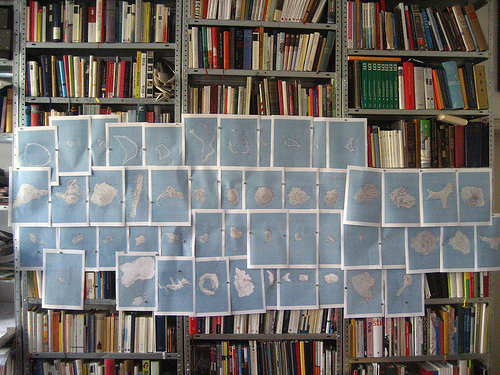 Judith Schalansky translated by Christine Lo (published by Penguin Books)
Judith Schalansky translated by Christine Lo (published by Penguin Books)
“Atlas of Remote Islands is an atlas of islands that Judith Schalansky hasn’t been to and never will, according to the subtitle. These short entries on mostly obscure, apparently irrelevant, and highly remote islands are researched then imagined. In a world where everything is mapped and available online, this atlas offers us a return to wonder and reminds us that we don’t know so much as we believe we do, and that knowing isn’t the end we thought it was. This book is an atlas of these small places, but its larger project is mapping–and probing–our history and dreamworlds.”
Nominated by Ander Monson, author of the acclaimed Other Electricities.
Reality Hunger: A Manifesto
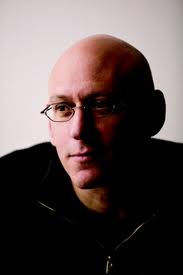 David Shields (published by Knopf)
David Shields (published by Knopf)
“I remember being at a reading this past spring at which David Shields was presenting his newest work, Reality Hunger. At the end of his reading, an older man in a cashmere sweater stood up during the Q & A session and began yelling—really yelling, borderline screaming—at David, at the audience, at any other writers there happened to be in the audience, and at the book industry in general. He was annoyed by a lot of things in Shields’ new book, but he was particularly displeased with the argument that ‘the novel is dead.’ And while this idea is not particularly new, Reality Hunger seems to have been attacked extensively because of this claim. What struck me even more than this man’s yelling however, and even more than his exasperation with an argument that’s been around for several decades at this point, was the fact that while he was lambasting Shields this man was holding in his hands a noticeably well-worn copy of Reality Hunger—complete with several torn pieces of paper sticking out of it as bookmarks. Whatever you think about David Shields’ manifesto, the book has unquestionably made a stir, and in a culture that seldom pays attention to the essay form, this is a remarkable achievement.”
Nominated by John D’Agata.
“Puppet”
David Soll (produced by David Soll)
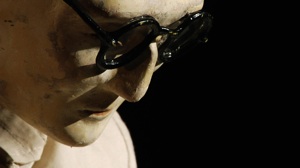
“The trailer for ‘Puppet’ opens with a black screen and the disembodied voice of the filmmaker: ‘Alright, so, tell me what you do for a living.’ Cut to a close-up of a man who gives a perplexed, possibly sheepish smile, and looks upward in search of an answer. Throughout the film, whether we hear this filmmakers voice or not, we feel him just behind the camera: asking, listening, looking. ‘Puppet’ is a film that tells the story of director Dan Hurlin’s theatre piece, ‘Disfarmer’, which tells the story of Mike Disfarmer, a nearly forgotten photographer from a small town in the Midwest who took stunning portraits of the people in his community. This narrative setup offers layer upon layer of artists considering other artists, all of whom work in different mediums. The film is ostensibly about Dan Hurlin’s theatre piece and puppetry as an art form (it does an excellent job illuminating the haunting space between inanimate object and living being), but it is also an investigation of the space between observer and observed, between the artist and his/her community, and the relationship between the artist and his/her own creation. A stunning visual language accrues across the course of the film; the viewer learns to see puppets very differently by the end. We also learn to see the work of these artists as fleeting and endangered, which makes their efforts and their art seem all the more beautiful.”
Nominated by Meehan Crist, reviews editor for The Believer magazine.
Infinite City: A San Francisco Atlas
Rebecca Solnit (published by University of California Press)

“I nominate Rebecca Solnit’s Infinite City: A San Francisco Atlas for its collaborative, investigative, and artistic work in the genre of the essay. Solnit collaborated with 27 artists, cartographers, designers, writers and researchers. Their work is often playful, curious, and provocative. The mode of the map is so seductive and Solnit takes full advantage of that aesthetic seduction. Beyond the pretty pictures and the curious facts, Solnit reminds us of the many ways we can navigate the intersection of space, ideas, and history. Solnit’s text foregrounds the importance of finding things out in order to make either a map, an essay, or an interpretive reading that reshapes the way we think of place, agency, and representation.”
Nominated by Catherine Taylor, founding editor of Essay Press.
“Best Worst Movie”
Michael Stephenson (produced by Magic Stone Productions)
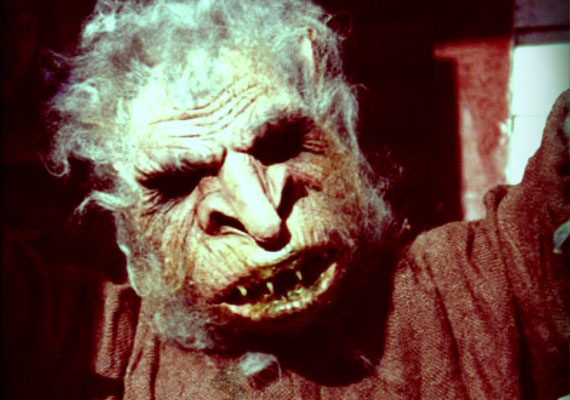
“What fascinates me about this film is its content—it is a documentary
by the child actor of Troll 2, oft-cited as the worst movie ever made,
and it’s about the making of that movie, in retrospect, and what that meant
and means to have made that movie, and what it meant to each of the actors
involved, many of whom are fascinating subjects in themselves; it’s also
about the collective brain of the audience responsible for making Troll 2
such a cult phenomenon, and it’s about the phenomenon of the cult phenomenon,
how self-denying hipsters venerate the spectacular artlessness of
pieces of art like this, and what that veneration has to say about the
important of the individual artist’s intelligence in the age of the studio
system. I’m also fascinated by the brain and eye behind the camera, that of
the child actor grown up, trying to sort through his past, piece by piece.”
Nominated by Ander Monson, award-winning author of Vanishing Point: Not a Memoir.
Everything Sings: Maps for a Narrative Atlas
Denis Wood (published by Siglio Press)
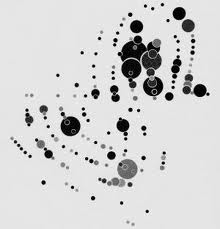
“In a series of unusual maps of Boylan Heights, his longtime neighborhood in North Carolina, Denis Wood’s Everything Sings embodies much of what I admire in essay: connection. These maps map more than the physical neighborhood, of course: they map the past, a series of subjective experiences of the place; they map the workings of a particularly lovely and obsessive brain, and they offer us a new way of understanding the workings of this particular world, by which I mean ours.”
Nominated by Ander Monson, founding editor of the online journal DIAGRAM.